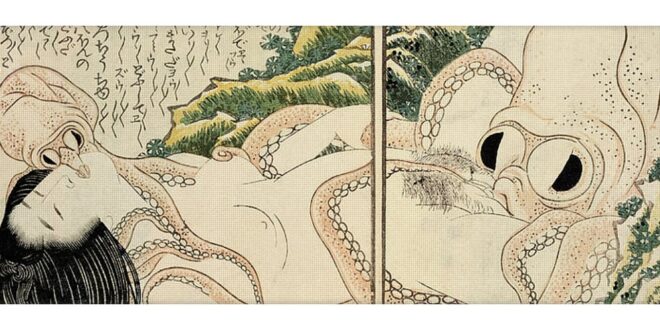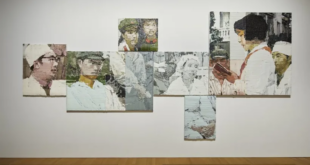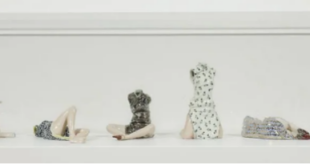When you step into the Hokusai: Inspiration and Influence exhibit at MFA, you start to be amazed by the variety of artistic creations in different artistic forms that reminds you of the world-renowned Under the Wave Off Fukagawa. It is not hard to realize that the powerful and dynamic depiction of the wave in Hokusai’s print has greatly influenced modern art movements. A leading Belgian Art Nouveau artist, Gisbert Combaz, created a series called La Mer, which includes postcards that gained inspiration from Hokusai, aiming to challenge academic art. There is even a Lego recreation by Jumpei Mitsui in 2021. An American sculptor, John Cederquist, expands this artwork of Hokusai into a wood sculpture called How to Wrap Five Waves. He mingles the imagery with his identity as a surfer, making the five waves seemingly burst through the wooden surface of a usable chest of drawers. Francis Newton Souza, an Indian painter, translated the imagery of waves from his thoughts onto canvas using vibrant and cheerful colors, along with an animated and expressive technique of brushwork. The addition of drips and splatters allowed his artistic vision to flow freely and unrestricted. This constant reference is a strong power Hokusai’s works possess, as it connects different generations from different places and enables the free addition of personal culture and thoughts.
Octupus, as an imagery of mystery and otherworldly power, echoes innovatory and unorthodox ideas in different cultures and times through artworks. The open-mindedness and sexual adventurousness it represents is what Hokusai tries to convey in his Woman with Large and Small Octupuses, also called The Dream of the Fisherman’s Wife. It depicts a female diver engaged in a sexual encounter with a pair of octopuses. During the Edo period, Japanese art and literature often explored themes of eroticism and sexuality, known as “shunga.” Shunga prints served as a form of sexual expression and were enjoyed by a wide range of social classes as a form of art.
In the past few years, The Dream of the Fisherman’s Wife has undergone a reassessment through a feminist lens. Certain analyses now perceive the piece as a provocative portrayal of women’s yearning and empowerment, disrupting conventional narratives shaped by male perspectives. This feminist reinterpretation has triggered conversations concerning the depiction of women’s sensuality in art and its wider significance.
In 2001, American artist Masami Teroka created Sarah and Octupus/Seventh Heaven. “Seventh Heaven” in the title represents extreme happiness. The two women in Hokusai’s and Teroka’s work have different colors of hair but the same gesture, signifying a universal experience of sexual pleasure and freedom.
 Tempus Magazine By Students, For Students
Tempus Magazine By Students, For Students 



